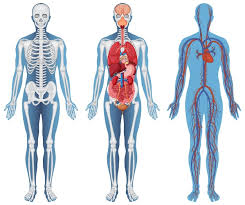Ph.D. in Anatomy: Introduction, Admission, Registration, Eligibility, Duration, Fees, Syllabus 2024

Introduction:
A Ph.D. in Anatomy equips students with advanced knowledge and research skills to explore the structure and function of the human body at a cellular, tissue, and organ level. It involves in-depth study and research in areas such as histology, embryology, neuroanatomy, and comparative anatomy, among others. Graduates of this program often pursue careers in academia, research institutions, healthcare, and pharmaceutical industries.
Admission Process:
- Submitting an online application through the university's website.
- Providing transcripts of undergraduate and any previous graduate coursework.
- Letters of recommendation from professors or professionals familiar with the applicant's academic and research abilities.
- Statement of purpose outlining the applicant's research interests and career goals.
- GRE scores may be required by some institutions.
- Interview with faculty members or admission committee.
Eligibility:
- A master's degree in a relevant field such as anatomy, biology, or biomedical sciences.
- Strong academic background with a minimum GPA requirement.
- Proficiency in English, often demonstrated through standardized tests like TOEFL or IELTS for international students.
- Research experience or relevant work experience may be preferred by some programs.
Completion Time:
The typical duration to complete a Ph.D. in Anatomy is approximately 4 to 6 years, although this can vary depending on factors such as research progress, dissertation preparation, and program requirements.
Career Opportunities:
- University professor or lecturer in anatomy or related fields.
- Research scientist in academic institutions, government agencies, or private industries.
- Medical writer or editor for scientific publications or pharmaceutical companies.
- Clinical anatomist in healthcare institutions.
- Consultant for medical device companies or forensic laboratories.
Syllabus:
- Advanced Human Anatomy
- Histology and Cell Biology
- Embryology and Developmental Biology
- Neuroanatomy
- Comparative Anatomy
- Research Methods in Anatomy
- Biomechanics and Functional Anatomy
- Seminar Series in Anatomy Research
Internship Opportunities:
- Teaching assistantships within the anatomy department.
- Research assistantships in faculty labs.
- Collaborative projects with healthcare institutions or industry partners.
- Internships with medical schools or teaching hospitals.
- Opportunities for international research exchanges.
Scholarships and Grants:
- Graduate assistantships providing stipends and tuition waivers.
- Institutional scholarships or fellowships based on academic merit.
- Research grants from government agencies like the National Institutes of Health (NIH) or private foundations.
- Travel grants to present research findings at conferences.
- Industry-sponsored scholarships or fellowships.
FAQs:
Is a Ph.D. in Anatomy only for those interested in academia?
While many graduates pursue academic careers, the skills gained in a Ph.D. program are also applicable to various industries such as healthcare, pharmaceuticals, and research institutions.
Can I apply directly to a Ph.D. program after completing my bachelor's degree?
Most programs prefer applicants with a master's degree or relevant research experience, although some may accept exceptional candidates directly from undergraduate programs.
What is the difference between a Ph.D. in Anatomy and a medical degree (MD)?
A Ph.D. in Anatomy focuses on research and teaching, while an MD is a professional degree for medical practitioners. However, individuals with a Ph.D. in Anatomy can also contribute to medical education and research.
Are there opportunities for interdisciplinary research in a Ph.D. program?
Yes, many programs encourage interdisciplinary collaboration, allowing students to explore connections between anatomy and fields such as physiology, bioengineering, or computer science.
What is the job outlook for Ph.D. graduates in Anatomy?
The demand for anatomists and researchers is expected to remain strong, especially with advancements in medical technology and the increasing emphasis on personalized medicine.




